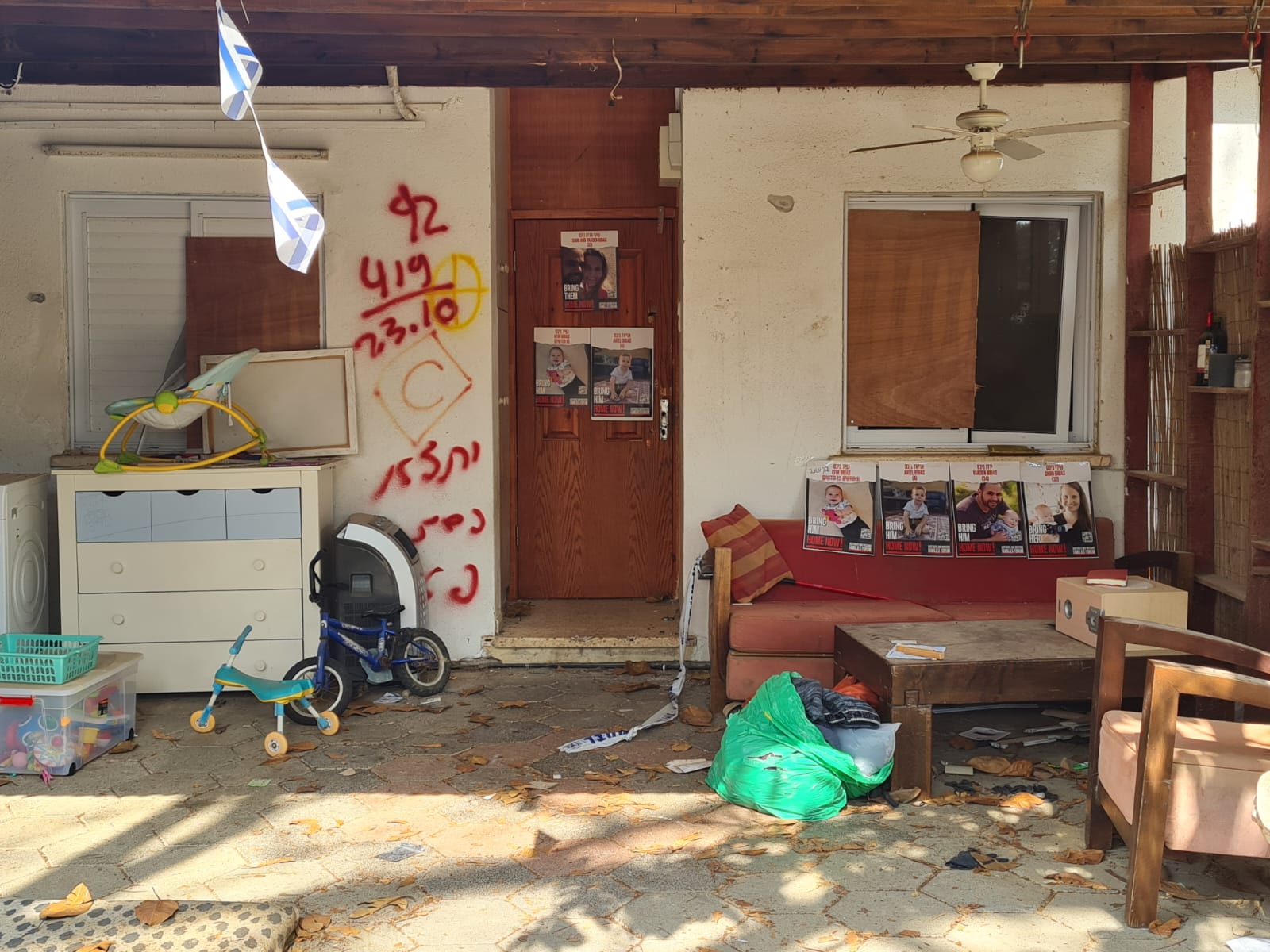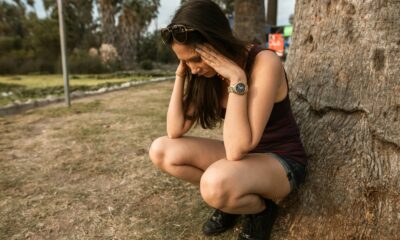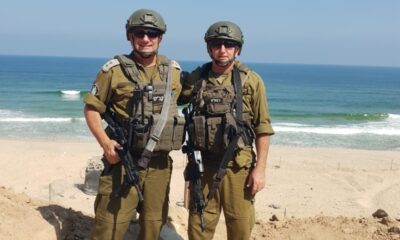
OpEds

Rebuilding life amidst the ashes
“We choose to live,” Michal Uziyahu from the Eshkol Regional Council, told our group in the south of Israel witnessing the horrors of 7 October.
I was travelling with a delegation from the Conference of Presidents of Major American Jewish Organisations to the communities that had been brutalised by Hamas on that horrific day. The courage of the people still living in this devastated area is inspiring. We met Naor Yiftach Gefner from Kibbutz Be’eri, the chief operating officer of the printing factory, who returned within a week to make sure that the business continued. Where we volunteered to pick strawberries, the farmer told us how he had returned, but his wife was still too fearful, what with the continuing rockets coming from Gaza. Our group assisted in the preparation of classrooms for children returning to the area. It’s inspiring to hear of the courage and resilience of people, who for so many years, have endured continuous attacks from Hamas culminating in the horror of 7 October.
Michal’s words were deeply moving in the wake of the scenes of death and destruction we witnessed earlier that day.
Our group visited Kibbutz Nir Oz, one of several kibbutzim on the border of Israel where Hamas militants arrived in the early hours of that horrific day to torture and murder the families who lived in this formerly peaceful agricultural area. The humble homes, with their pretty gardens and loving art hanging from the trees, showed a close-knit community. The invaders didn’t just want to murder these innocents; they wanted them to suffer.
A member of the community, Nir Metzger, showed us around. He managed to save his family, but his parents were taken hostage. His mother was freed alongside some of the other hostages released in exchange for the release of Palestinian prisoners, but his father remains in captivity. The refusal of Hamas to allow visits by the Red Cross or to share any details of their status, coupled with the horrific experiences his mother endured during her time as a hostage in Gaza, has made him fearful for his life.
Walking among the charred homes, I saw scribbles on the walls indicating the number of bodies that had been recovered in each house. It has literally taken months for some of the burnt bodies to be identified by forensic teams. Posters on some of the homes show family members who had been taken hostage.
As I approached one of the burnt homes, I saw the familiar faces of the Bibas family – mother, father, and the two children – baby Kfir, who was abducted at nine months, and his four-year-old brother, Ariel. Their toys are still strewn around the patio, and there are two garden gnomes with the red hair that have become familiar to all of us around the world. Later that day, a video was released showing the terrified face of mother, Shiri, clutching her little red headed sons surrounded by Hamas gunman in Khan Younis. It was recorded the day after they were kidnapped from their home in Nir Oz. Nothing further is known about the Bibas family.
Seeing the charred remains of the Siman Tov house was harrowing. Hamas terrorists shot through the door of the safe room, firing on parents Jonny and Tamar in front of their four-year-old son and six-year-old twin daughters. They then burned the family alive. Their charred bodies were found clinging together. One could make out the burnt fridge and stove in what was once a kitchen where this loving family had, four months ago, sat around the dinner table.
And it continued in every home we passed. Ofer Calderan (53) and his two children, Sahar (16) and Erez (12), were taken hostage. Sahar and Erez were released in November, but Ofer is still in captivity. The bodies of their grandmother, Carmella Dan, and autistic cousin, Noya Dan, were found on 19 October. Next, the home of 83-year-old Oded Lifshitz, a poster stuck on the wall shows that he, too, was one of the hostages. Burnt home after home, each with its own horror story.
We entered the communal dining hall where kibbutz members would gather for meals. I imagined the chatter of community members catching up with one another, discussing work issues, parenting concerns, or just a good gossip. Today, the building is empty with burn marks on the walls. At each seat are photographs of kibbutz members who have been killed or taken hostage. In a side room are the post boxes with the names of every household on the kibbutz. Some had red stickers to indicate they were abducted and are being held in captivity. Others had black stickers to indicate that the occupants of that home were murdered. One in four members of the kibbutz fall into one of those categories – murdered or taken captive. Their residents form part of the 51 000 displaced people from the south who are living as refugees.
We visited the ANU Museum of the Jewish People in Tel Aviv and saw the newly launched exhibit on 7 October. For the first time, I saw the photographs of the day – the terrified faces of civilians being rescued; the traumatised faces of the soldiers and rescue teams. I have in my head the little boy cowering in a corner with his rabbit, soldiers helping frightened mothers and their children out of their homes as they walked past murdered neighbours.
And this tells only part of the story. The following day, I met South African hostage Aviva Segal, who was held hostage for 51 days before being released during the swap. Her husband, Keith, is still being held hostage, and she struggles to deal with it. She has personal experience of the horrific conditions in which they were held. She described the lack of food and water. She spoke of three days they were abandoned in the terror tunnels where they were gasping for breath with limited oxygen. She witnessed the sexual violence, the forced nudity, and the humiliation meted out to hostages.
The report on sexual violence by the Association of Rape Crisis Centers in Israel told of harrowing accounts of sexual violence not only on 7 October, but also against those still in captivity. Released hostages have told of the ongoing sexual assaults that women and men are experiencing in Gaza. Survivors of the Nova festival, backed up by forensic evidence and video recordings by Hamas themselves, show mass rapes often perpetrated in front of family members or loved ones. We still remember the images of the women being dragged away on motorbikes or cars by Hamas gunmen.
We met Shelley Shemtov, whose 21-year-old son was abducted at the Nova festival. He had activated his live location on his phone, and she watched as his phone and her precious son were seized. She later saw a video of him handcuffed on a truck and being taken to Gaza. Two of his friends, siblings Maya and Itay Regev were released. He’s still a prisoner. Looking at this brave mother, I now know what sunken eyes look like. She’s living a nightmare and is fighting together with other survivor families for the urgent release of her loved ones. She and the other families of hostages pleaded with us to go back to our communities and make sure they remain on the agenda.
One of the speakers we met used an apt expression. The horror of 7 October brought out in global Jewry, a “synchronised heartbeat”. We all grieve, mourn, and call desperately for the release of the hostages. But we also rebuild, strengthen, and support our sisters and brothers as we recover from this ordeal and bring our people safely home.
- Wendy Kahn is national director of the South African Jewish Board of Deputies.










